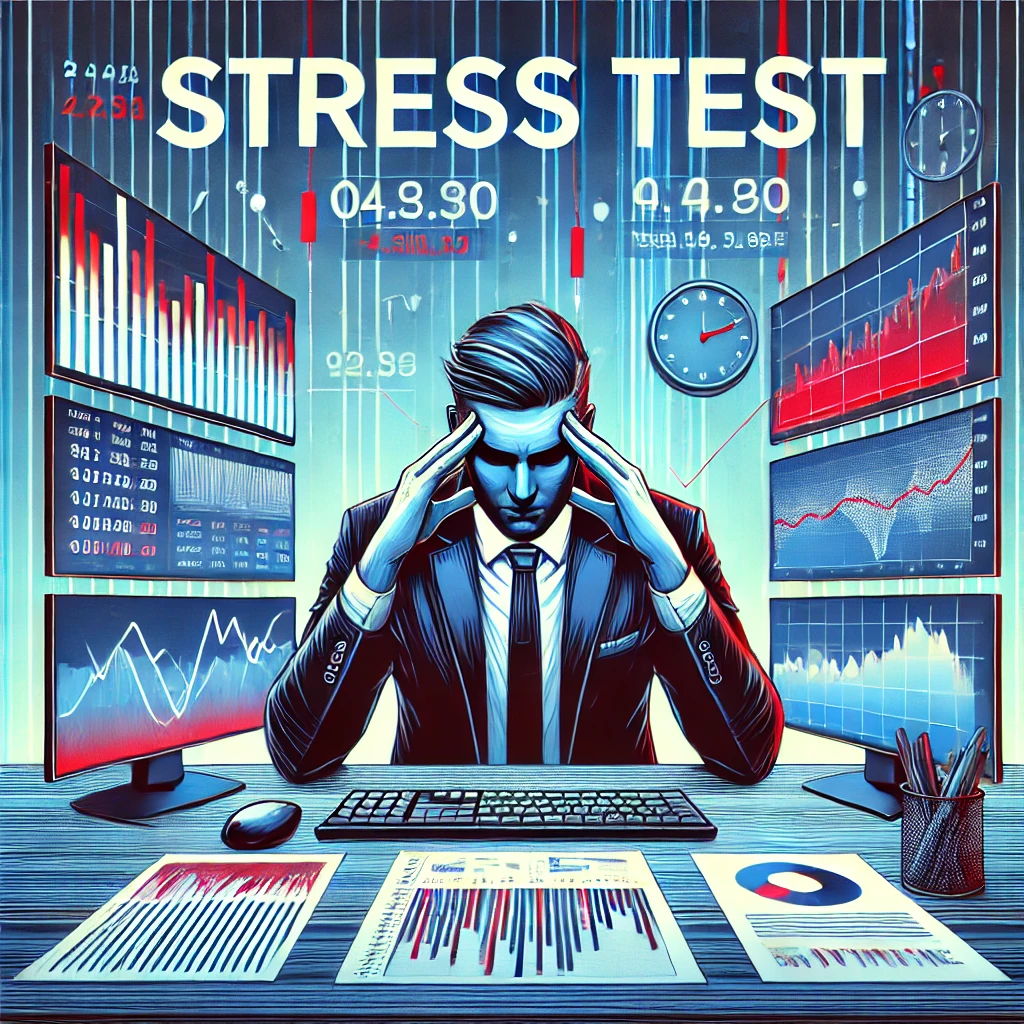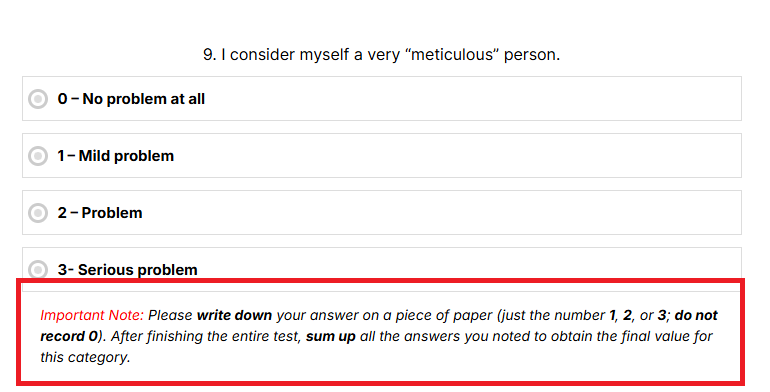Stress Test
Welcome to the page where you will find three interconnected tests – the WT Test, the LSI Test, and the SPI Test. Each of these tests can be purchased separately for 5$. Their results complement one another, and you will need to combine them at the end of the final test (SPI) to obtain a comprehensive evaluation.
Important Notice about Testing Frequency:
If you are a day trader, intraday trader, or involved in similarly short-term trading styles, we recommend performing these tests at least once per month—even more frequently during periods of higher stress.
For swing traders and long-term investors, we recommend taking these tests approximately once every 2 to 3 months.
Important Note:
- We recommend having pen and paper (or another method of note-taking) handy so you can record your scores from the WT and LSI tests.
- By the end of the SPI test, you will need all three scores to finalize a complete overview.
After completing all three tests, you will gain a holistic insight into how stress affects you and how well you can manage it. If you have any questions, feel free to contact us.

WT Test
The WT Test (Worry Tendency Test) measures your general tendency toward worry, uncertainty, and anxiety. It assesses how strongly you react to stressful situations, whether you tend to perceive stress more intensely, and how your feelings influence your trading and investment decisions.
It contains 11 questions and is not time-limited.
Each question in the WT Test describes various feelings or situations that may relate to your everyday life or investment environment. Your task is to select an answer on a scale from 1 to 5, based on how often you experience these feelings:
- 1 – Very rarely
- 2 – Rarely
- 3 – Occasionally
- 4 – Often
- 5 – Very often
The result of the test will reveal your tendency to worry and how this might impact your ability to effectively manage investing or trading.
LSI Test
The LSI Test (Life Stress Inventory) evaluates how many stressful events you have encountered over the past 12 months and how significantly they have impacted you. It helps determine to what extent these stressors may affect your mental well-being and potentially influence your trading or investment decisions.
It contains 61 questions and is not time-limited.
Instructions for Completing the LSI Test
- Time Period: Assess how much a given situation/stressor has affected you over the past 12 months.
- Rating Scale (0 – 3):
- 0 = This situation did not apply to me at all (it did not occur in the last 12 months or was not a problem for me).
- 1 = Mild problem (the situation occurred but lasted for a relatively short time or was weak, or it ended more than 6 months ago).
- 2 = Problem (the situation was noticeable and lasted for a certain period, but not continuously – approximately 3–6 months).
- 3 = Severe problem (the situation was significant, lasted most of the year, or had a strong long-term impact).
- If the situation lasted less than 6 months (e.g., 1 – 5 months), it likely caused a mild/moderate problem → 1 or 2, depending on its intensity.
- If the situation lasted longer than 6 months (or for most of the year), choose 2 or 3, again depending on its severity.
- If the situation did not affect you at all in the past 12 months (or it happened over a year ago and no longer influenced you), choose 0.
Important considerations:
- If the situation occurred more than 12 months ago and no longer affects you, consider it as not relevant → 0.
- If the situation occurred recently and lasted (or has been lasting) for at least 6 months, you can rate it as 2 or 3.
- If it lasted less than 6 months, consider a lower score (1 or 2).
- Always try to assess the real impact on your life over the past year (if it was strong and lasted longer, lean towards 3; if it was weak or short-term, lean towards 1).
By following these guidelines, you will accurately determine how much stress a given situation has caused you over the past 12 months.
Important Note:
This test contains 11 specific questions that include additional instructions beneath their answer choices. For these questions, we kindly ask you to record your answer (a number from 1 to 3) on a piece of paper—do not record 0. After completing the entire test, sum up these 11 answers. Your sub-score should range from 0 to 33. At the end of the test, this sub-score will influence your overall result.

SPI Test (Stress Protection Inventory)
About the Test:
The SPI Test helps determine how effectively you manage stress and how quickly you recover from it. It focuses on five key areas of your life:
- Health & Nutrition
- Exercise
- Rest
- Mental Relaxation
- Problem-Solving
Each area includes various habits and activities that can contribute to your overall stress resilience.
Number of Questions & Rating Scale
- The test contains 45 questions.
- Each question is rated on a 0 – 3 scale:
- 0 = This situation does not apply to me at all
- 1 = This situation applied to me in the past 12 months, but not anymore
- 2 = This situation applies to me currently (or affects me in the recent past)
- 3 = This situation has applied to me continuously for the past 12 months
This allows you to assess how consistently you practice each stress-reducing habit or behavior.
Instructions for Completing the Test
- Focus on the Last 12 Months
For each question, consider how long and how intensively you’ve maintained or utilized that habit to handle stress. - Be Honest
Your results will be more accurate if you evaluate your behaviors realistically, without embellishment. - No Time Limit
Take as much time as you need to think through each question. - Interpretation Notes
- A lower score indicates weaker stress resilience, potentially leading to faster exhaustion and difficulties coping with demanding situations.
- A higher score signifies a stronger ability to manage stress and recover quickly.
After completing the test, your points will be summed to produce a total SPI score (ranging from 0 to 135). This will help you determine how well you’re protecting yourself from stress and where you may need improvement.
Find out more about testing your trading psychology at Trading Psychology Test.
